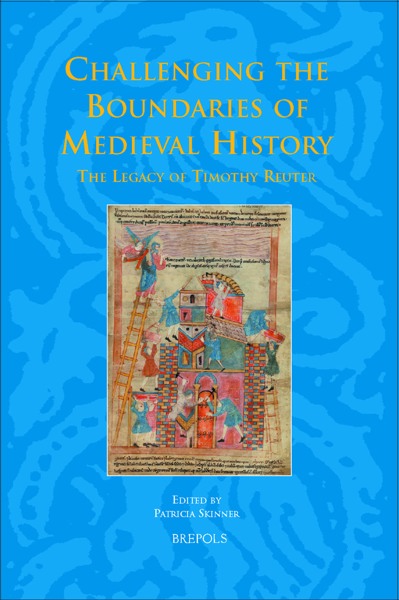
The Lexical Effects of Anglo-Scandinavian Linguistic Contact on Old English
Sara M. Pons-Sanz
- Pages: 589 p.
- Size:156 x 234 mm
- Illustrations:19 tables b/w.
- Language(s):English, Old English, Old Norse
- Publication Year:2013
- € 150,00 EXCL. VAT RETAIL PRICE
- ISBN: 978-2-503-53471-8
- Hardback
- Available
- € 150,00 EXCL. VAT RETAIL PRICE
- ISBN: 978-2-503-55891-2
- E-book
- Available
"The author has a gift for clarity of presentation, from her exemplary introduction through nineteen sets of tables and four appendices. This volume is a solid contribution to the study of cultural contact between English and Norse speakers during the long Viking Age. Like the author's two earlier books (...) the current work is up-to-date, methodologically sophisticated, cautious, learned, and judicious, constantly weighing difficult questions of probability and possibility." (Roberta Frank, in: The Medieval Review, 14.05.02)
"Pons-Sanz has provided a work that is theoretically well informed and meticulously detailed in its presentation of the linguistic, historical, and textual complexities that require discussion. It will remain the standard work on the subject for many years to come, but also lights the way for further cultural and textual analysis building upon her firm foundations." (Greg Waite, in: Parergon, 32.1, 2015, p. 269-271)
“This is a very good book and it is hardly possible to do it justice in the space available here. In sum this is an excellent and most useful publication, which is likely to remain a standard work on the subject for a long time.” (Stefan Thim, in The Review of English Studies, 2016, p. 787-788)
“Sara M. Pons-Sanz’s comprehensive study (…) beautifully illustrates how methodologically rigorous philological studies can inform modern linguistic theory and continue to shed fresh light on old questions (…) The thought and appreciation for detail in this book is evident throughout, and the study shows an impressive awareness of the textual and philological issues that Old English lexicological studies raise, which comes as no surprise given the author’s proven record in the field” (Amanda Walling, in the Journal of English and Germanic Philology, 115/4, 2016, p. 496-498)
“[The book] marks a little over a decade of new research into Anglo-Scandinavian linguistic contact that has tested and refined many of the assumptions that lay behind the conventional wisdom doing so in careful, if not headline-grabbing, fashion that will serve future scholars. This short review offers a brief survey of these important contributions” (Aidan Conti, in NOWELE, 70/1, 2017, p. 98)
« L’ouvrage de Sara Pons-Sanz sur les emprunts au vieux norrois dans la langue anglaise à l’époque de leur contact linguistique, jusqu’à peu après la conquête normande, est de très bonne facture, bien structuré, et riche en informations. » (Olivier Simonin, dans Cahiers de civilisation médiévale, 57, 2014, p. 510)
Anglo-Saxon England experienced a process of multicultural assimilation similar to that of contemporary England. At the end of the ninth century, speakers of Old Norse from present-day Denmark, Norway, and Sweden started to settle down in the so-called Danelaw amongst the Anglo-Saxon inhabitants, and brought with them cultural traditions and linguistic elements that are still a very significant part of the English speaking world in the twenty-first century.
This book analyses the first Norse terms to be recorded in English. After revising the list of terms recorded in Old English texts which can be considered to have derived from Norse, the author explores their dialectal and chronological distribution, as well as the semantic and stylistic relationships which the Norse-derived terms established with their native equivalents (when they existed). This approach helps to clarify questions such as these: Why were the terms borrowed? At what point did the terms stop being identified as ‘foreign’? Why is a particular term used in a particular context? What can the terms tell us about the Anglo-Scandinavian sociolinguistic relations?
Chapter 1. Introduction
Chapter 2. Etymological Study
Chapter 3. Lexico-Semantic Study
Chapter 4. The Norse-Derived Terms in their Texts: Some Case Studies
Chapter 5. Concluding Remarks
Appendix I. Record of the Norse-Derived Terms
Attested in Old English Texts
Appendix II. Old English Texts Recording Norse‑Derived Terms
Appendix III. Terms and Structures which Are More Likely to Be Native
Appendix IV. Terms in Early Middle English Texts Included in the OEC
Bibliography
Word Index




